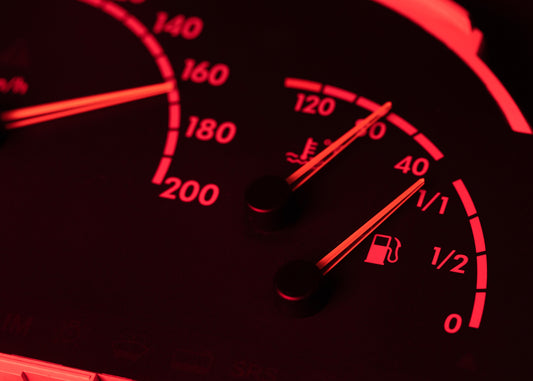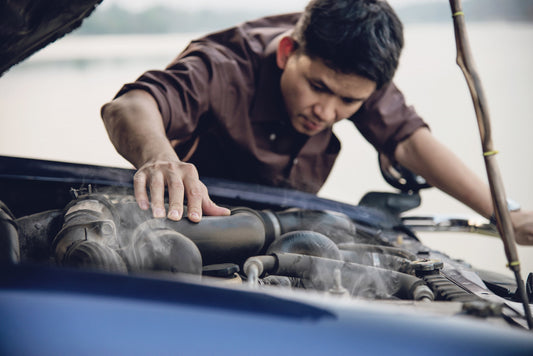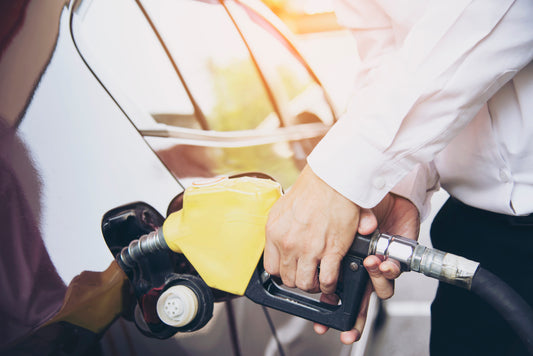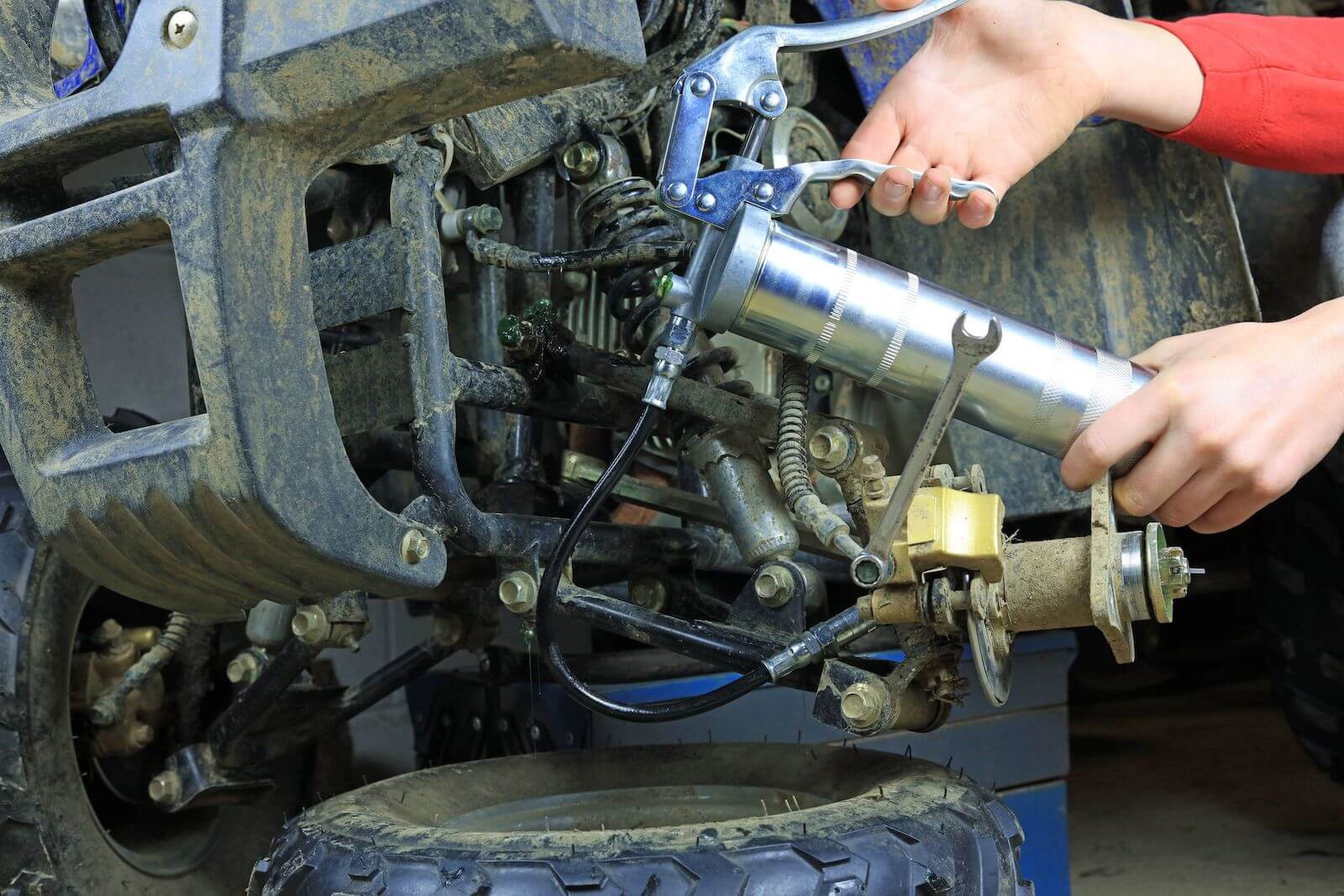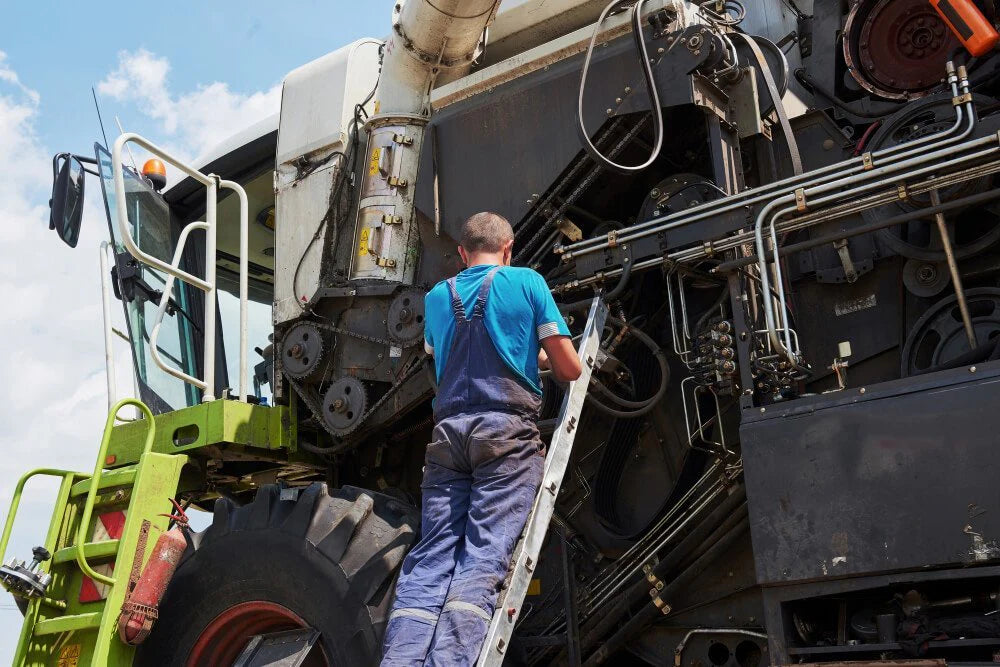In this step-by-step guide, we will explore the importance of a clean fuel tank, how to identify rust in your fuel tank, and the process of cleaning and coating it to ensure optimal functionality.
Understanding the Importance of a Clean Fuel Tank
Before we discuss the process of cleaning and coating a rusty fuel tank, let's first understand the significance of maintaining a clean tank. The fuel tank plays a crucial role in your vehicle's fuel system, as it stores and supplies fuel to the engine.

A dirty fuel tank can disrupt this process and lead to various problems, such as reduced fuel efficiency, engine misfires, and even complete engine failure.
The Role of a Fuel Tank in Your Vehicle
Your vehicle's fuel tank serves as a reservoir for fuel, ensuring a steady supply to the engine. It prevents fuel starvation during acceleration or inclines and allows the engine to run smoothly.
A clean fuel tank ensures that the fuel entering the engine is free from contaminants, such as dirt, debris, and rust particles.
The Dangers of Rust in Fuel Tanks
Rust is one of the biggest enemies of a fuel tank. When rust forms inside the tank, it can contaminate the fuel, clog the fuel filter, and damage the fuel pump.

This not only affects the engine's performance but can also lead to costly repairs or, in extreme cases, a fuel leak or fire hazard. Therefore, it is crucial to identify and address rust in your fuel tank as soon as possible.
Identifying Rust in Your Fuel Tank
Now let’s see how you can identify whether your fuel tank is affected by rust. Here are some common signs that indicate a rusty fuel tank:
- Rusty or discolored fuel: If you notice rust particles or a reddish-brown color in your fuel, it's a clear indication of rust in the tank.
- Clogged fuel filter: A clogged fuel filter can suggest the presence of rust or debris, which has accumulated from a rusty fuel tank.
- Reduced fuel efficiency: If your vehicle's fuel efficiency has significantly decreased without any apparent reason, it could be due to a rusty fuel tank affecting the fuel delivery system.
- Unusual engine noise or misfires: Rust particles in the fuel can lead to engine misfires, rough idling, or a knocking sound.

To identify rust in your fuel tank, you'll need a few tools:
- Flashlight: A bright flashlight will help you inspect the tank's interior more effectively.
- Magnetic probe: A magnetic probe is useful for detecting rust particles clinging to the internal surface of the tank.
- Paper towel: Keep some paper towels handy to observe any signs of rust or discolored fuel.
Preparing for the Cleaning Process
Now that you've identified the presence of rust in your fuel tank, it's time to prepare for the cleaning process. There are a few important safety measures to consider:
- Work in a well-ventilated area: Cleaning a fuel tank can release harmful fumes, so ensure you're in a well-ventilated space or outdoors.
- Wear protective gear: It's essential to protect yourself from any potential hazards. Wear gloves, safety glasses, and a long-sleeved shirt to shield your skin.
- Disconnect the battery: Before you begin working on the fuel tank, disconnect the car battery to prevent any electrical accidents.
Before starting the cleaning process, gather these essential supplies:
- Fuel siphon pump: This tool will help you safely drain the fuel from the tank.
- Fuel tank cleaning solution: Invest in a high-quality fuel tank cleaning solution to effectively remove rust and contaminants.
- Rubber hose or tube: A rubber hose or tube will be necessary to siphon fuel out of the tank during the cleaning process.
- Scrub brush or sponge: You'll need a scrub brush or sponge to remove the rust and debris from the tank's interior.
Step-by-Step Guide to Cleaning a Rusty Fuel Tank
Now that you have all the necessary tools and supplies, let's dive into the step-by-step process of cleaning a rusty fuel tank:
Step 1: Draining the Fuel Tank
Start by draining all the fuel from the tank. Follow these steps:
- Locate the fuel tank: The fuel tank is usually situated beneath the vehicle, at the rear.
- Disconnect the fuel pump or the fuel line: Refer to your vehicle's manual to find the appropriate procedure for disconnecting the fuel pump or fuel line.
- Use a fuel siphon pump or the rubber hose: Insert the pump or hose into the tank and begin siphoning the fuel into a suitable container. Ensure the container is approved for storing flammable liquids.
- Dispose of the fuel properly: Take the container of fuel to a local recycling center or follow the appropriate guidelines for fuel disposal in your area.
Step 2: Removing and Cleaning the Fuel Tank
Once the tank is empty, you can proceed with removing and cleaning it:
- Disconnect the fuel tank straps or mounting bolts: Use the appropriate tools to disconnect the straps or bolts that secure the tank in place.
- Lower the tank: With caution, lower the tank until you can easily access the top.
- Inspect the tank: Use a flashlight to carefully inspect the inside of the tank for rust, debris, or any signs of damage.
- Clean the tank: Apply the fuel tank cleaning solution to the interior of the tank and scrub it thoroughly with a brush or sponge. Rinse the tank with clean water to remove any residue.
- Allow the tank to dry: Leave the tank to air dry completely before proceeding to the next step.

Step 3: Treating the Rust Inside the Fuel Tank
Now, it's time to treat the rust and ensure it doesn't reoccur:
- Use a rust converter: Apply a rust converter to the interior of the tank. This will convert any remaining rust into a stable compound that will prevent further corrosion.
- Coat the tank with a rust inhibitor: Apply a rust inhibitor to the tank's interior to provide long-term protection against rust formation.
You can also watch this video to see the workings of the Wagner Rust Converter:
WAGNER Tank Sealing KIT: Your Solution to Perfect Fuel Repair
Coating Your Fuel Tank Post-Cleaning
A fuel tank coating acts as a barrier between the fuel and the metal, preventing rust formation and extending the tank's lifespan. It also helps reduce the risk of contamination and damage to the fuel system components.
That is why, after successfully cleaning the fuel tank, it's important to coat it to maintain its integrity and prevent future rust formation.
Applying the Coating to Your Fuel Tank
Follow these steps to apply the coating:
- Clean the tank again: Make sure the tank is clean and free from any debris or residue before applying the coating.
- Prepare the coating: Mix the coating solution according to the manufacturer's instructions.
- Coat the interior: Use a brush or spray gun to evenly apply the coating solution to the interior of the tank. Ensure complete coverage.
- Allow it to cure: Let the coating cure for the recommended time, as specified by the manufacturer.
Final Words!
By following these step-by-step instructions, you can properly clean and coat a rusty fuel tank, ensuring optimal performance and longevity for your vehicle.
Remember to prioritize safety precautions, use the appropriate tools and supplies, and consult a professional if you encounter any difficulties.
With a clean and coated fuel tank, you can enjoy a smoother driving experience and avoid costly repairs down the road.
Meanwhile, discover how to prevent rust from silently clogging your fuel filters and keep your engine running smoothly.
Finally, don’t forget to try our Wagner Rust Converter which makes de-rusting very easy. Simply submerge the rust part in the rust converter, wait 24 hours, and your part will look like new! Visit our store now.


